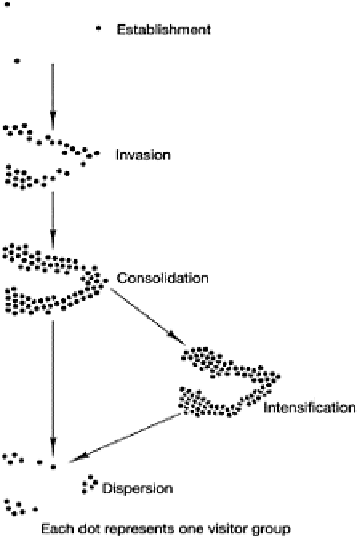Geography Reference
In-Depth Information
facilities permit a more detailed understanding of site use. Glyptis (1981b) used
observations on five days in August and September between 11 a.m. and 6 p.m. to collate
data. Visitor arrivals at the site during the weekend occurred between 12 noon and 2 p.m.,
and peak use occurred at 4.30 p.m., with the majority of visitors spending one to two
hours on site. The gradual increase in intensity of use by time of day varied by activity,
with informal games and picnicking declining after Sunday lunch and walking increasing
throughout the afternoon. Local users also displayed a preference to use the site at off-
peak times, with increased patterns of dispersion and clumping through time. This
reflects access roads, with visitors parking close to (within 15 yards) the site they visited.
Visitors were also recorded going to landmarks and facilities (e.g. viewpoints) as well as
buying refreshments (e.g. from mobile vans), with the density of use increasing through
the day rather than the distribution.
Glyptis (1981c) devised a simple model to explain the dynamics of visitor dispersion
(Figure 2.7). Figure 2.7 shows that initial visitors to a site choose a favoured location
linked to parking areas, with further inflows of visitors during the early afternoon
marking an 'invasion phase' which extends the initial cluster. Thereafter, as the pace of
arrivals slows, a degree of infilling and
Figure 2.7:
Glyptis' model of visitor
dispersion at an informal recreation
site
Source:
redrawn from Glyptis (1981c)

